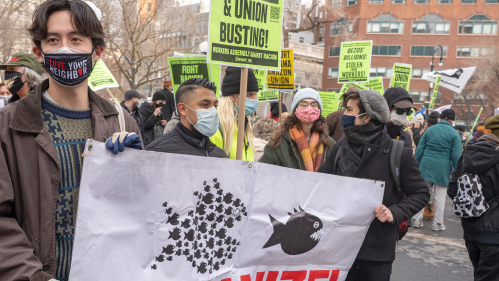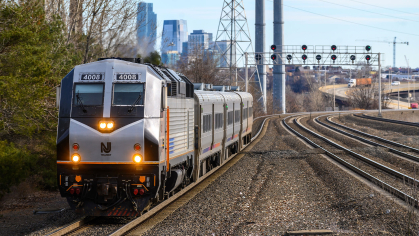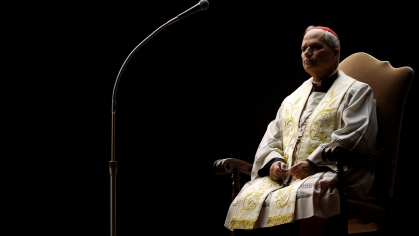The State of Labor in America

COVID-19 cases are surging and unemployment benefits are ending as we head into Labor Day.
The Delta variant is pushing the U.S. to a daily average of more than 100,000 cases – the highest total since last winter – at a time when federal pandemic unemployment benefits are winding down. And while K-12 schools and many offices are reopening, some stores and restaurants are on the verge of shutting down because of the nationwide labor shortage.
Rutgers Today asked Rebecca Kolins Givan, an associate professor of labor studies and employment relations in the School of Management and Labor Relations, to assess the state of labor in America.
Federal unemployment benefits will expire on Labor Day. Millions of Americans, including approximately 500,000 New Jerseyans, will no longer receive the $300 weekly supplemental payment and many of them will lose their benefits entirely. What impact will this have?
The impact could be devastating. We know from research into the states that ended this assistance early that cutting unemployment doesn’t really push people back into jobs, but it does push them back into poverty. With many people still struggling with childcare and other caregiving responsibilities, and many jobs offering insufficient hours, inconsistent schedules and little to no paid sick leave or family leave, many people who would like to work find insurmountable obstacles.

We’ve seen employers offering higher wages, signing bonuses, and other perks in the hope of filling vacant positions. Do you expect this to be the new norm, or will all of that go away when the pandemic is over?
If the economy continues to recover, workers will be able to choose jobs with higher wages, more reliable schedules and better working conditions. But some industries may need to do more. For example, restaurant workers have long endured physically taxing work, low pay and an environment rife with harassment and abuse. We may need broader structural changes – which could result in higher prices for customers – before workers are willing to come back.
Let’s shift to a pair of topics you’ve researched at length: labor issues in education and health care. Millions of children are going back to school this month as K-12 schools resume in-person learning. How are teachers and their unions handling this moment?
Teachers and their unions have been tirelessly advocating for basic safety protocols, including vaccines, masks and proper ventilation so that students can learn in a safe environment. But in states that have banned mask and vaccine mandates, it’s essentially impossible for schools to meet basic public health guidelines. Now we’re seeing that many teachers are opting for a career change or early retirement rather than putting themselves and their families at risk.
A disproportionate number of women left the workforce during the pandemic, often because they had to stay home with their kids during virtual learning. Now with the Delta variant surging, moms face a tough choice: go back to work, or stay home just in case schools shut down again? What’s the long-term solution?
The pandemic really demonstrated that our piecemeal approach to childcare is insufficient. If we are serious about support for families, we need a number of new investments, including paid family leave, free or subsidized childcare and nationally available pre-k programs. Leaving these problems to the market simply doesn’t work. We need public investment so that childcare workers are paid a sustainable wage, and those who need care for their children aren’t faced with options that are scarce, unaffordable, or both.
In many parts of the country, the Delta variant is stretching hospitals thin. You’ve been writing about nurse unions and safe staffing demands for many years, long before the pandemic. Where do we stand on this critical issue today?
Nurses are currently in the paradoxical position of being lauded as heroes while still being stretched to the limit. We know that sufficient staffing is the only way to assure high quality patient care, yet so many hospitals would rather burn out their staff and put patients at risk in service of the bottom line. This problem will likely only get worse without regulation. Hospitals are unlikely to raise staffing levels unless the government forces them to do so.
What about personal protective equipment? We all remember the shocking photo of the nurses at Mount Sinai Hospital who resorted to wearing garbage bags over their scrubs when they ran out of surgical gowns in March 2020. How are we doing on PPE today?
This is an area of massive improvement. PPE is much more widely available now and health care workers are reporting that they have the masks and other protective equipment that they need.
Finally, we can’t talk about Labor Day without talking about unions. Several nurse unions have gone on strike for the safe staffing reasons we just discussed. Nabisco workers recently walked off the job over pensions and outsourcing. And we’ve seen a big push this year to unionize Amazon facilities, so far without success. What’s the state of labor unions in America?
Only about 11 percent of American workers are in unions, but that’s over 14 million people. And that number hides significant variations based on region and industry. In New Jersey, for example, 16 percent of all workers and 60 percent of public sector workers are unionized.
I think we’re at an interesting moment. Though union membership is way down compared to 50 years ago, we’re seeing a real uptick in organizing in certain sectors – including non-profits, news and digital media – and we’re witnessing a reinvigorated labor movement. Workers have been striking for the future of public schools and safe patient care, fighting back to stop sexual harassment and holding employers to account on their promises around equity and diversity. Overall, I’d say that right now unions are down but decidedly not out.


